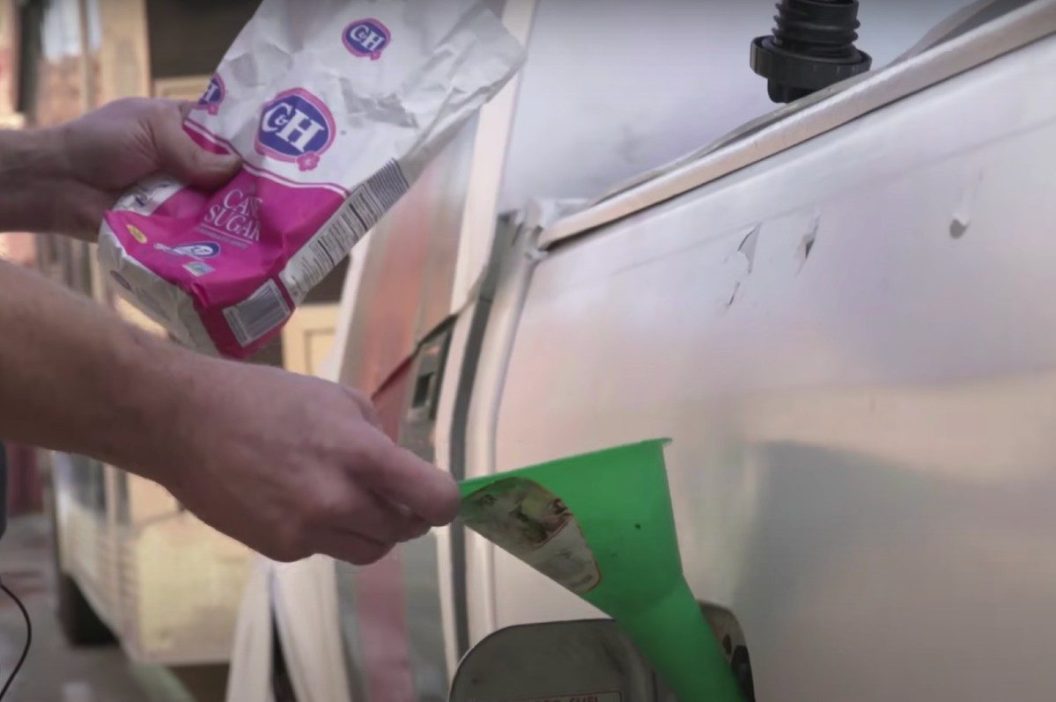According to popular legend, if you don't like someone, as in really, REALLY don't like someone, one fantastic way to get revenge is to pour sugar in their fuel tank.
This sticky revenge technique/prank has been perpetuated since the 1950s. It states that dumping a bag of sugar into a car's gas tank will cause the sticky substance to dissolve in the fuel, and then distribute throughout the fuel system, thus clogging all of the engine components with gooey sugar-gas mixture, eventually traveling to the car's engine, and absolutely ending your vehicle's life. Literally the only thing you can do is get a new car.
So one question remains: Is this true?
Does Sugar in a Vehicle's Gas Tank Really Kill the Car?
For years, people haven't wanted to conduct the necessary experiments to find out what really happens if you put sugar in a car's gas tank. Honestly, can you blame them? What do you even do with an engine after you clog it up with sugar crystals?
Now, if you prefer believing urban legends are true, stop reading here. But, if you are very much concerned that one of your prank-oriented pals will cause some serious damage for the low price of a bag of sugar, great news:
It's all a myth.
Forensics professor John Thornton conducted an experiment involving radioactive carbon atoms, sucrose, and a centrifuge. The automotive experiment itself is pretty cool, but the short version is: Putting sugar in gas won't cause your engine to explode.
That's Great News, But What Does Happen When You Put Sugar in a Fuel Tank?
First of all, don't do it. It won't seriously mess up your car, but surely you have better things to do with your time and money than putting sugar in your vehicle's gas tank.
That being said, here's the scoop.
Sugar doesn't dissolve in gasoline. Not white sugar, not brown sugar, not 87 octane, not 94 octane. Chemistry for the win.
So, those undissolved sugar granules will chill out at the bottom of the fuel tank, rather than filling the gas tank with a weird gassy syrup.
Even better, your vehicle has a lot of filters in place, from the fuel tank and fuel line to the fuel injectors, that will make sure no amount of sugar gets to your engine.
Your fuel filter will get the brunt of the mess and will likely need replaced. Symptoms of sugar poisoning in cars includes engine misfire, and if you run the vehicle a lot, you might blow out a fuel pump.
So, if you suspect that one of your bonehead friends or coworkers might have put something untoward in your vehicle's gas tank, just drop the tank, clean whatever's hanging out at the bottom of the gas tank, check the sock filter and the fuel pump flow rate, and go on with your life. This will also give you time to pause and reflect on your relationship with your bonehead friends or coworkers, too.
Sure, it's a hassle, but way better than getting a new car.
This post was originally published on April 29, 2021.
